All about chinchillas
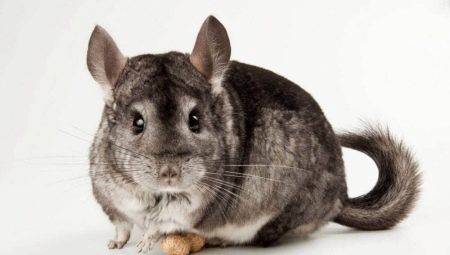
Chinchilla is a beautiful and interesting animal that can often be found in an apartment. It not only attracts attention with its valuable fur, but also with its behavior patterns. Before you get yourself such a rodent, you should familiarize yourself with the information about its content.
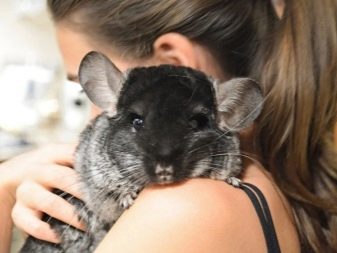

Who are they?
Chinchilla is a fluffy rodent that belongs to the chinchilla family.
Appearance description
An adult animal reaches 22-38 cm in length, its tail is 10-17 cm. The skull is round, the neck is shortened. The coat is characterized by increased density and strength. Fur is able to warm the animal in cool weather; guard hairs are located on the tail. The weight of an adult animal can be 800 grams.
The rodent looks attractive: it has large round black eyes with vertical pupils. Thanks to such pupils, animals can see well at night. The antennae are 8-10 cm long, the ears are rounded and reach 6 cm. Special membranes are located in the auricles, thanks to which the rodent can close the ears when taking a sand bath. This way the sand does not penetrate the ears.

The dental system contains 20 teeth. The mouth itself is small, narrow, and the gums are well developed. Adult chinchillas have 16 molars and 4 incisors. The former are characterized by deep seating in the jaw bones and have a square cross-section.
Newborn babies have 16 teeth, where there are 8 molars and 4 incisors. Two incisors are located on the upper half, the rest are below.They are strongly protruding and have a chisel shape. The teeth (anterior surface) are painted with reddish or yellow enamel. Dentin is located on the posterior surface, so this part of the teeth is erased in the future and takes the form of a sharp chisel. The incisors are used to bite off and hold food.
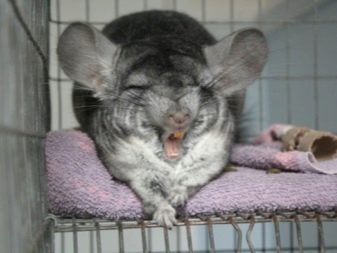
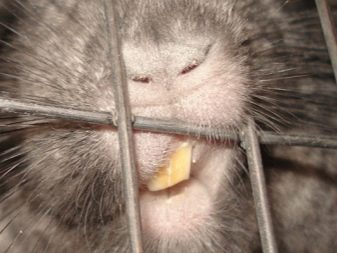
The animal has the ability to droop into narrow crevices of rocks. It does this by compressing the skeleton. The front paws have five toes, where 4 are grasping, and one is practically not used. It is 2 times longer than the others. The hind legs have 4 toes; the limbs themselves are twice as long as the front ones. Thanks to this structure, the animal is able to jump high.
Due to the well-developed cerebellum, the rodent is characterized by impeccable coordination of movements, which helps it navigate rocky terrain.
Now, as before, chinchillas are actively hunted... This is due to the value of animal fur, which is used in the production of fur coats. Thereby the number of animals is noticeably decreasing and they are included in the Red Book.
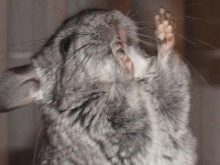
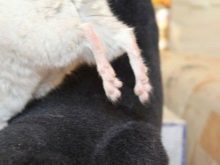
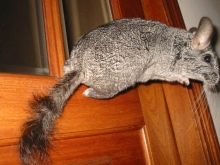
Character and behavior
Chinchillas tend to make original sounds if they show displeasure. From the outside, it is similar to a duck quacking or chirping. When a rodent is angry, it makes sounds that resemble a roar, blowing its nose, and will also click its teeth. When frightened, he squeaks loudly.
The rodent is able to fend for itself and is prone to attack... It looks funny: the animal rises on its hind legs, begins to growl, drains urine and bites.
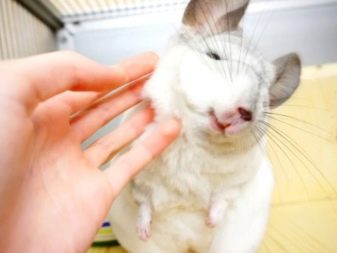

Where do they live?
The homeland of the chinchilla is South America. The animals live in its northern parts, where dry and rocky terrain prevails. The height above sea level of their habitats is 400-500 meters. Usually rodents live in the Argentine, Peruvian, Chilean mountains. They can also be found in the Andes in Bolivia. The temperature in the summer season in these places is no more than 24 degrees, in the winter the thermometer drops to -20 degrees. A dry cold climate with a lot of winds prevails here.
In places where chinchillas live, there is a meager flora. In these areas you can find cabbage, shrubs, cereal plants along with herbs. This assortment influenced the formation of their diet.
The animals have very long intestines, which are able to extract nutrients from scarce foods. The length of the intestinal tract of an adult is 3.5 meters. Wild chinchillas prefer plant foods: twigs, bark, succulents, grass and foliage.
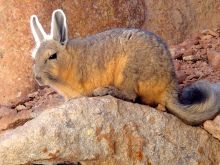
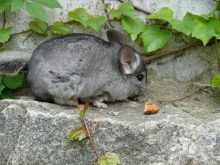
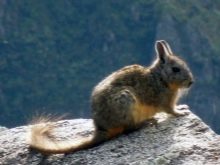
Rodents are active at night and live in groups of up to 100 individuals. During the daytime, they hide in rocky crevices or use burrows that other animals have created. There is always an animal in the group, which is assigned the role of an observer. He monitors the safety of the pack and when danger appears, he screams loudly.
In the wild, chinchillas mate. The offspring is born once a year. There are 2-4 cubs in the litter.
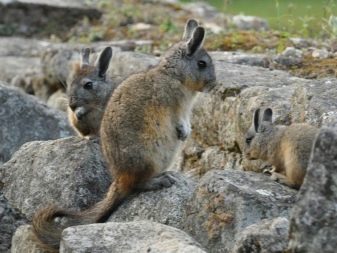
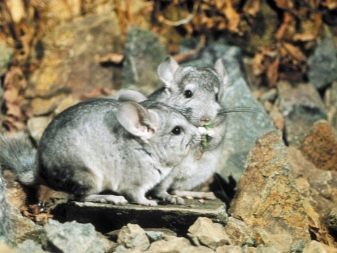
How many years do they live?
In the wild, animals live for only five years. The domestic chinchilla is characterized by a long lifespan of up to 25 years. Cases have been recorded when rodents lived to be 28 years old.
The lifespan of these animals at home depends on how the owner takes care of his pet. Proper care and attention can prolong this period.
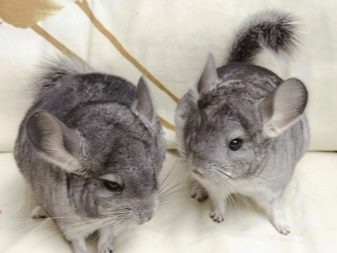
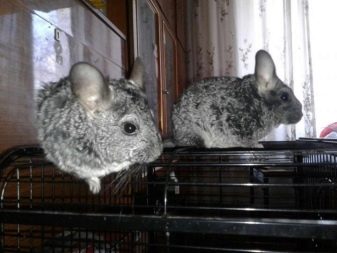
Varieties and color options
There are two breeds of animals, each of which has its own characteristics.
- Small long-tailed (coastal). The body of the animal reaches 22-38 cm in length. It is distinguished by a long tail (10-17 cm), which is distinguished by its fluffiness. Outwardly, it is similar to the tail of a squirrel. The animal is characterized by large black eyes, antennae of sufficient length, large and round ears. Such individuals are small compared to the next breed.
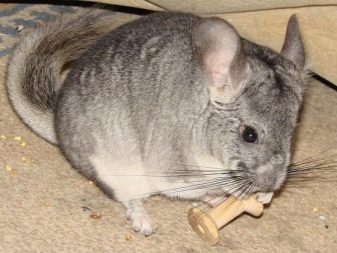

- Short-tailed (large). This breed has short front legs, along with powerful hind legs. The tail is small. The neck is thick. The coat can be grayish-blue with a white belly. Such chinchillas are characterized by a wide head on which small lilac ears are located.
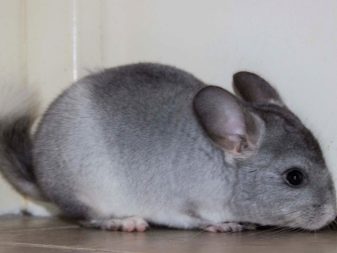
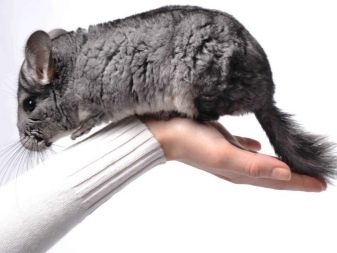
In addition to key varieties, there are a large number of mutational ones that are obtained through the work of breeders. For many years, people have mixed rodents of different colors.
Color options
Standard rodents are in demand among farmers and are considered the main species of domestic rodents. They have gray-blue fur on the femoral, head, tail, dorsal parts. The belly is white.

The predominant color is "agouti", which is characterized by zoning: the upper part of the hair is dark, the middle part has a light shade, and the base is dark. The showiness of fur is called a veil. The middle part of the hairs will be saturated or, conversely, diluted.
At home, the following colors are most often found:
- traditional gray;
- white;
- beige;
- black velvet;
- brown velvet;
- sapphire;
- purple.
Many owners mix these colors with each other, due to which they get hybrids. There are about 200 variations in total. There are varieties that have complicated genetics, since the color was obtained in several steps.

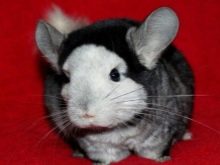
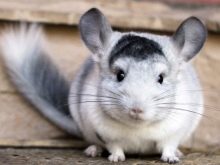
Traditional gray
This is a color that is found in the wild. It contains a couple of recessive genes. If you cross representatives of this type, their children will have the same color. The standard gray color ranges from light standard to dark standard... In places where bends are located, a tonal play is observed, which is expressed in the following: the bottom and top may be black, and the middle may be white.

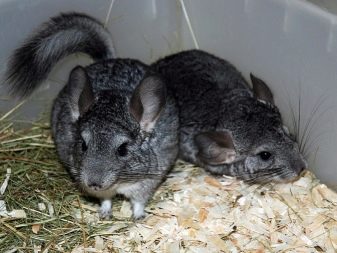
Black velvet
Such rodents were bred by American breeders in 1960. They are recognizable by their color: the head and back are black, the belly is painted white. The forelegs are decorated diagonally with black stripes.
Crossbreeding of representatives of this color with each other is not allowed, since they contain a lethal gene that has a negative effect on the offspring.
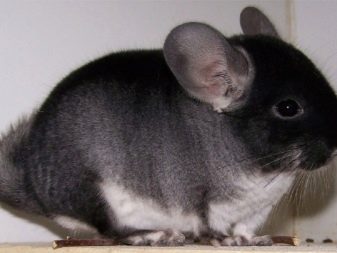
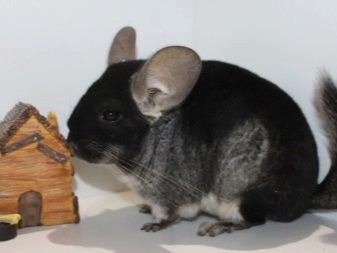
You can cross rodents with other colors to get the following hybrid individuals:
- by crossing with white Wilson, white velvet individuals are obtained;
- mixing with hetero beige representatives makes it possible to obtain a chinchilla in brown velvet;
- if you mix this color with purple in two passes, you can get a purple velvet color.
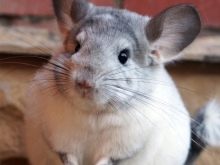

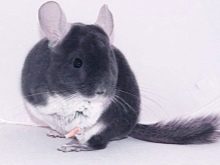
White Wilson
This color was created in 1955 in the United States and is the first mutational variation. Such rodents can differ in their appearance: their fur varies from snow-white color to silvery dark color.
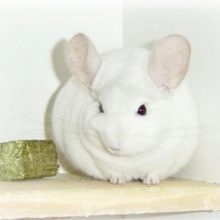
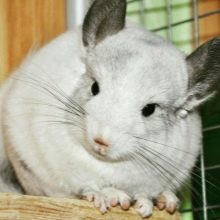

White
White rodents are representatives with a lethal gene, which is formed due to the combination of a pair of white individuals. In order not to risk the quality components of the offspring, white chinchilla should not be crossed with other similar ones.
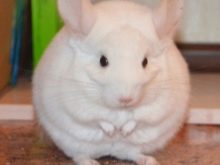

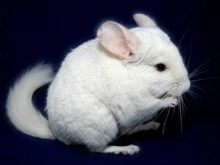
White velvet
This color is obtained by combining the black velvet chinchilla with the mutational white Wilson look. As a result, the offspring will have the genes black velvet, gray traditional and white.
Crossbreeding with colors from the velvet category is not allowed: sapphire, black, brown, white. Does not need to be paired with white ebony, white and pink chinchilla and white. This prohibition is justified by the presence of two lethal genes in the coloring.
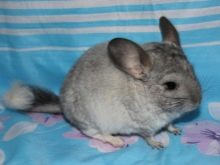
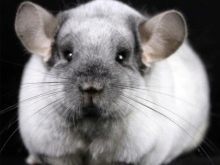
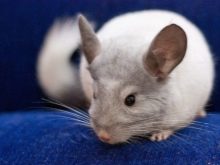
Beige chinchilla
The first individuals with this color appeared in 1955. If the beige color is dominant, the animal looks like this: the ears are colored dark red or pink. Sometimes there are black spots on the ears. The fur coat can be light or dark beige.
Chinchilla of this color is considered homozygous.This suggests that it is allowed to be mixed with other individuals. As a result, you can get good hybrid offspring.
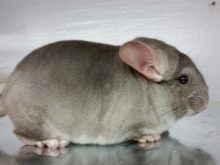


Beige homozygous
These species are characterized by a light creamy coat with pinkish tints. The ears are also pink in color, the pupils are light pink, around them there is a white or light blue iris.
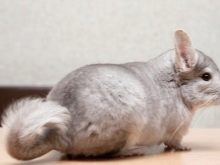


Brown velvet
This color is achieved by combining black velvet and beige chinchillas. Puppies have a snow-white belly and a back, which is distinguished by a light or dark shade. To exclude a decrease in the number of babies in the litter, crossing of individuals with a black velvet gene is not approved.
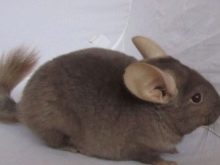
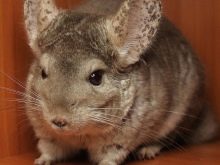
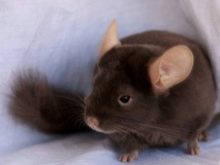
Purple
The purple color is a recessive mutation that only shows itself as a homozygous state. When mixed with traditional colors, babies are born with the traditional gray color that will carry the purple gene. But visually, he will not show himself. The color of the coat is light lilac or dark lilac. The belly has a snow-white color.
The purple color is a rare occurrence because these individuals are allowed to breed only when they reach the age of 14-18 months.
Despite all the attendant difficulties that are observed when breeding new offspring, purple individuals are considered popular in European states.
It is best to mix these rodents with a traditional gray color that will carry purple. This will help not ruin the fur.

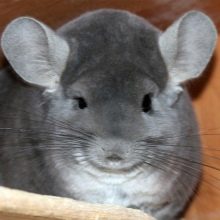
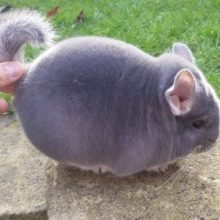
Purple velvet
It is a mutation resulting from the mixing of a homophobic rodent with a black velvet rodent, possessing the black velvet gene along with the traditional purple. Rodents have dark lilac fur, white belly, and dark diagonal stripes are present on the limbs. The black velvet gene affects the purple color, making it darker.
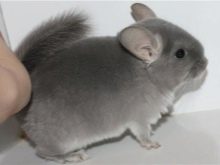

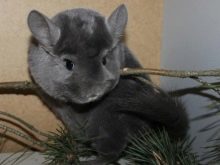
Sapphire
This is a recessive coloration. If you mix it with traditional rodents, you get offspring that will be the traditional carrier of the sapphire color, which does not appear externally. If you cross two individuals of this color, or just one sapphire chinchilla with a carrier of this color, sapphire babies will be born. The color of the fur coat will not change its characteristics during all the years of the animal's life.
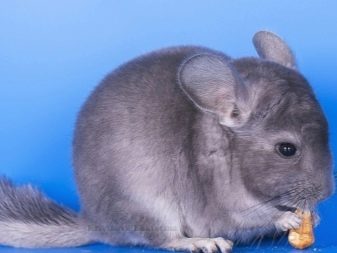
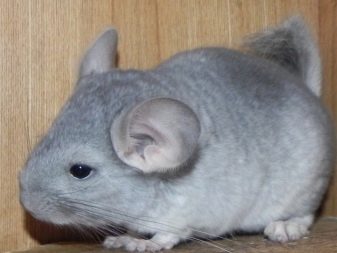
Royal Persian Angora
Angora Chinchilla is the most beautiful and striking chinchilla mutation on the market. Dr. Caraway was the first to describe it. He reported that the rodent not only possesses very long fur (which is twice as long), it also matures quickly. Already at 5 months, the animals are ready for crossing, which certainly delighted the fur farmers.
Such individuals have the most delicate and densest fur. No hard guard hair. Any color can be used.

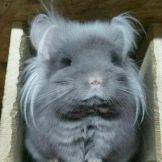

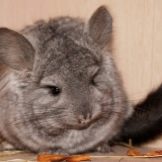
What do they eat?
Chinchillas are herbivores that are not picky about food. The main part of their diet is beans, grains, seeds, moss, lichen and other herbaceous vegetation. The animal cannot refuse tree bark, shrubs and small insects.
Chinchilla nutrition is no different from a rabbit's diet. At the moment, in specialized stores for animals, a large amount of feed for this species of rodents is being sold. In parallel, you can feed your pet with dry bread crusts, seeds, fruits. In the winter season, the pet will enjoy the mixed grass hay, twigs, dried apples, raisins, nuts, dried apricots, wild rose and barberry.

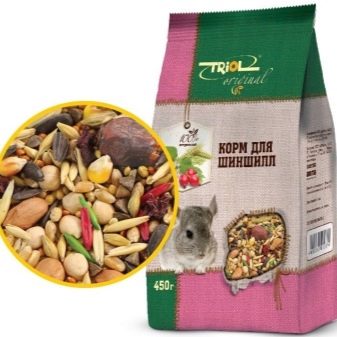
Owners who feed their pets with greens in summer should remember the rules for introducing top dressing: they start with a couple of dried dandelion leaves per day. Bean stems with clover should also be withered or dried, as they can cause flatulence in an animal when fresh. Root crops must be fed carefully, carrots must be washed.
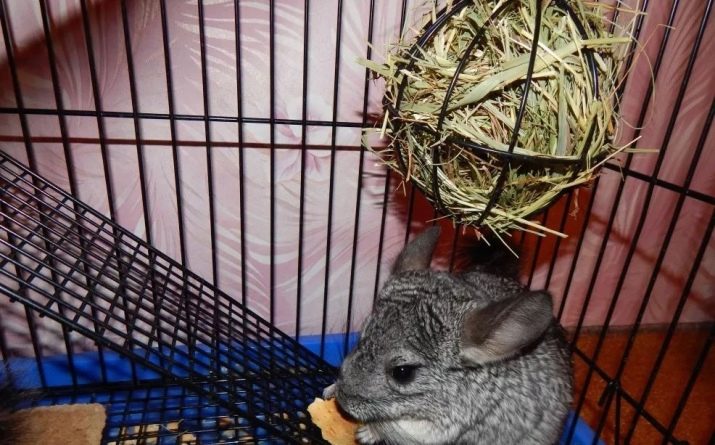
Herb hay is an essential ingredient in the chinchilla's diet. Immediately exclude wet or moldy hay from feeding. The pet should have access to fresh water around the clock.
The water that flows from the tap is not suitable for the chinchilla, because the animal can die from it. It is preferable to purchase artesian or mineral water without gas. Alternatively, boiled or purified water is allowed.
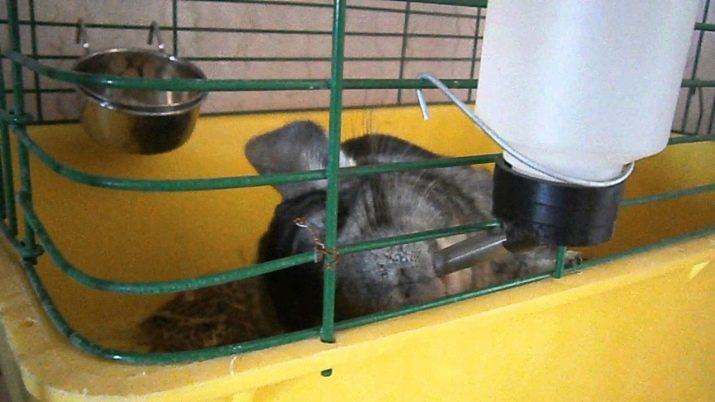
In order for the front incisors of the animal to grind down, apple, pear, willow, birch or willow branches must be present in the cage. You can use linden twigs, acacia shoots or hazelnuts.
Coniferous branches, citrus, cherry, plum oak, as well as walnut branches are not recommended.
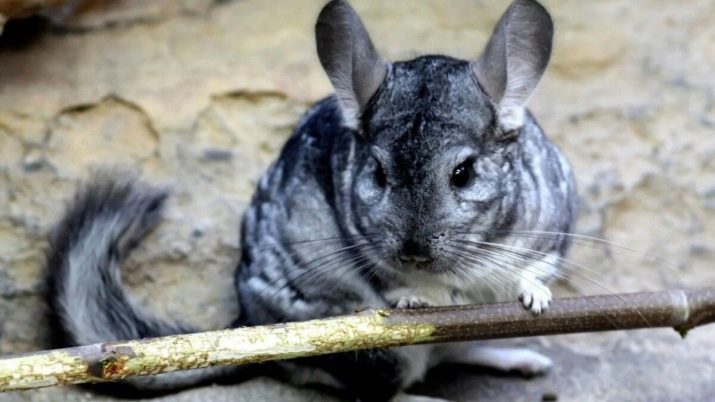
You can give special chalk or pumice stones. Chalk will not only help grind your teeth, but it is also a mineral supplement.
A large amount of sweet and high-calorie food is not the best option for feeding a chinchilla. Such a diet can provoke obesity and have an adverse effect on the reproductive function of the animal.
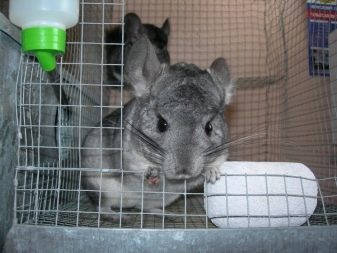
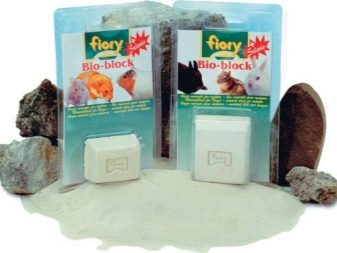
Breeding features
In most cases, these animals are monogamous. Pregnancy of a female can be determined by the increase in body weight. Weight increases every two weeks by 100-110 grams. After the second month of pregnancy, the belly begins to grow and the nipples swell. Pregnant individuals should be provided with vitamins and healthy food. Pregnancy lasts 112 days.
Closer to childbirth, the female practically stops moving and refuses to eat. Usually, childbirth takes place in the morning, between 5-8 hours. The duration of delivery can last from several minutes to several hours.
As a rule, the process occurs naturally, without outside help. If childbirth is accompanied by difficulties, the female needs to be given sugar (2-3 ml syrup or in the form of sand 1.5-2 grams).
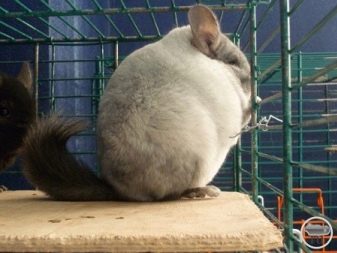
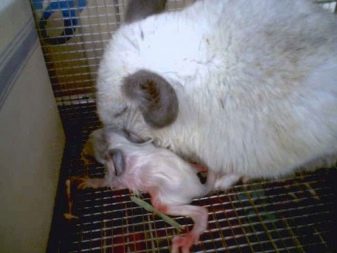
Puppies are born with open eyes and erupted teeth. The body is covered with fluff. On the first day, they can already move freely. When the offspring are 24 hours old, they should be weighed and gender determined. Newborn individuals weigh 30-70 grams.
An older chinchilla can please its owner with offspring of 5-6 puppies, while young individuals give birth to 1-2 cubs. A day after giving birth, the male can re-fertilize the chinchilla. In one year, the female gives birth to 3 offspring, but the latter is not desirable, since the animal's body is greatly depleted.
Milk appears on the birthday of the offspring, but sometimes you can face a delay of 3 days. For this reason, the owner should monitor the condition of his pets: if the babies are hunched over, sitting with their tail down, attention should be paid to their mother. If she does not have milk, the babies are transferred to a nurse or fed with a special kitten formula. During the first week, babies should be fed every 2.5-3 hours.
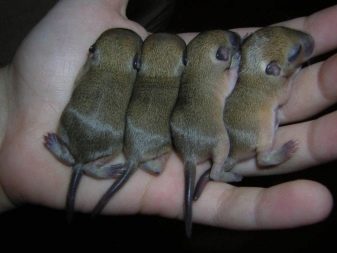
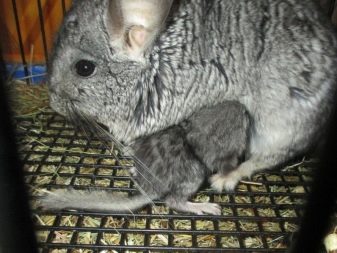
Lactation lasts 45-60 days. After that, the puppies must be removed from the mother. Sitting at the age of one month is allowed if the offspring is artificially fed.
Chinchillates grow rapidly and increase their size by 3 times by the month. Their weight at this moment is 114 grams. At the age of 60 days, the weight of individuals reaches 201 grams, at three months - 270 grams. Transplanted individuals should be kept in regular cages for several pieces. Males and females should be housed separately. You can often encounter polygamous breeding of rodents, when there is one male for several females.

How to determine the age and gender of a chinchilla?
It is difficult for an ordinary person to accurately determine the age of an adult, but the difference between a baby and an adult chinchilla is obvious.
The puppy has a rounded muzzle, small round ears. The neck is short.If an individual has white teeth, then she is milk-fed and her age is no more than two months. Over time, the rodent's teeth take on a dark shade and turn orange.
When the animal is 7 months old, its genitals are fully formed, which makes it possible to roughly understand the age of the animal.
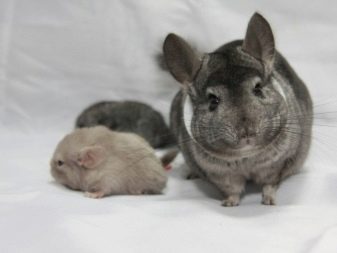

Distinguishing a two-year-old from a five-year-old is more difficult.... First of all, the animal should be weighed: the mass of an adult chinchilla varies between 500-900 grams. The older the pet, the more weight it will have (if proper care is provided). The skin on the legs can also indicate the age of the animal. Juveniles have smooth skin. In older representatives, it is rough. Chinchilla of venerable age cannot boast of activity, like that of young fellows.
It is easy to distinguish a female from a male: in a girl, the anal and genital opening are located side by side, in a boy - at a distant distance (3-4 mm).
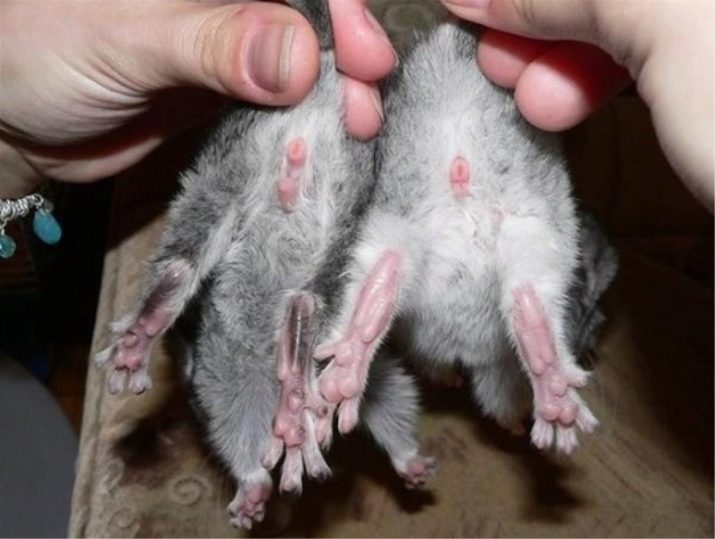
Content rules
The chinchilla is not difficult to care for, which makes it very popular among rodent lovers. However, there are some rules to keep in mind.
- These rodents require large cages. It is best to choose high enclosures that look like enclosures. A pen is enough for one animal, the dimensions of which are 100 * 80 * 50 cm.
- These animals like the height, so you should provide the animals with wooden shelves. The chinchilla does not need ladders as it can jump high.
- Also, a house of wood should be installed in the cage, in which the animal will be free.
- A hammock, a tunnel and a running wheel are essential attributes for keeping a rodent in a comfortable environment.
- Chewing accessories are an integral part of keeping chinchillas. You can put small branches, blocks of wood, chalk or salt stones in the aviary.
- Surfaces are treated with natural detergents every day.
- When choosing a cage, you need to pay attention to the material. Plastic must be excluded immediately, since the animal will gnaw it, and in the esophagus, this material will cause intestinal obstruction with a fatal outcome.
- No litter is required in the cage, but a litter box for your pet's litter box can be placed in the corner. If the owner neglects the litter box, every day the animal's excrement should be cleaned up with a broom.
- For a couple of hours a day, the rodent should be released from the cage. In this case, you need to monitor your pet, as the chinchilla tends to chew on objects and can ruin the wires and other things.
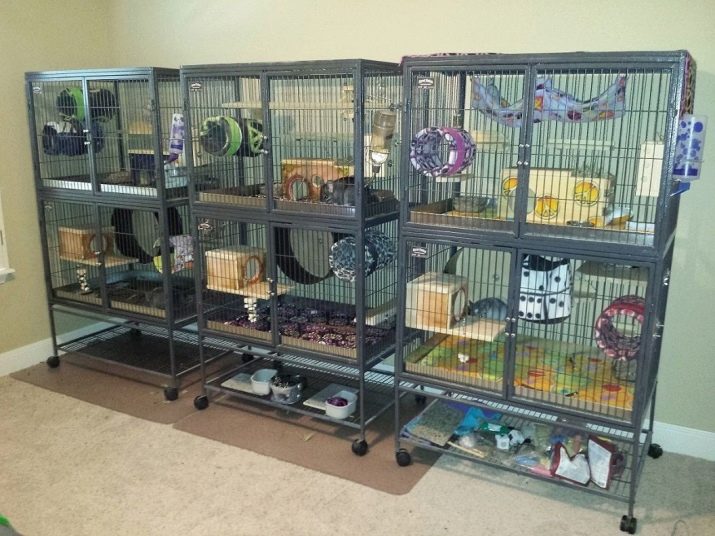
How to bathe
Since chinchillas cannot be bathed in water, they need a sand bath. Clean, fine sand is preferred. The bath is placed in the aviary several times a week. It is not recommended to leave it on a permanent basis, since the skin of the animals begins to dry out from frequent bathing. Also, the chinchilla can chew on the bath or go to the toilet in it.
It is best to buy special sand - cialite. It is found in the wild. The animal grinds off its incisors about it, after which it bathes in the resulting dust. It is undesirable to use Polish sand, as it is simple river sand. If the animal swims in it, there is a risk that it will ruin its fur.
When choosing cialite, one should take into account its peculiarity: it is a dust powder and is not very convenient for use in an apartment. For this reason, experienced owners mix it with German bathing sand. The ratio of both varieties should be identical.


For a bath, 2 cm of sand is enough. Twice a week, the filler is sieved with a sieve. Two packs of bathing sand are enough for 6 months.
Some owners buy baths at a pet store or use special containers, the size of which is 30 * 20 * 20 cm. They are made of plastic or tin.
The animals like to swim. Their fur becomes fluffier, airier, the mood of the pets improves markedly.It is interesting to watch the bathing of rodents, therefore, if possible, it is advisable to use transparent baths. If you don't want to buy ready-made ones, you can use a saucepan or a three-liter jar.
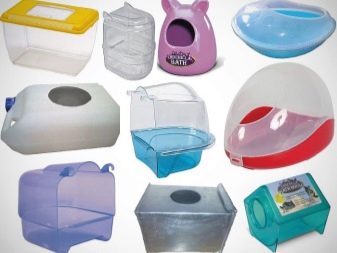
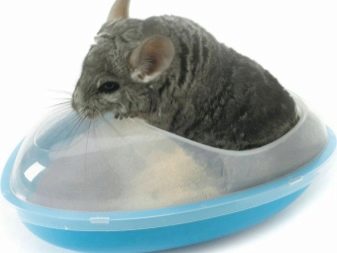
Owner reviews
Reviews of chinchilla owners confirm the simplicity of caring for the animals. Most people like their lack of odor, which a rat or hamster cannot boast of. This is one of the positive qualities of these animals. Also, you do not need to walk with rodents, a two-hour walk around the apartment is enough for them.
Some owners complain that the chinchilla chews everything and it is impossible to leave it alone in the apartment without attention. Otherwise, you may run into gnawed furniture and damaged wires.
When keeping such animals, you need to remember that chinchilla at the moment of fright not only screams loudly, but also drains urine. This can cause some discomfort.
Animals respond to the nickname, love to sit on their hands and caress. Many owners note that a chinchilla is smarter than a rat.

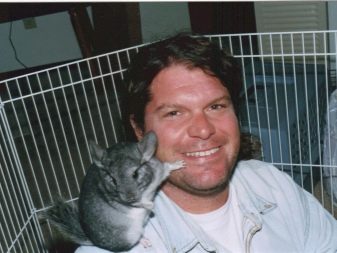
Diseases and their prevention
A chinchilla can get sick if it is not properly cared for or fed inappropriate food. Most commonly, rodents suffer from gastrointestinal upset, hair problems, obesity, bladder stones, as well as conjunctivitis and periodontal disease. Hypothermia and sunstroke are also dangerous for animals.
Most diseases of the gastrointestinal tract and coat are associated with improper diet, change of diet, poor quality food and lack of vitamins.
If the owner notices a change in the condition of his pet, you should immediately contact your veterinarian. It is not worth postponing a visit to the clinic, since with timely treatment there are more chances for the pet to recover.
Signs of chinchilla disease:
- refusal to eat;
- lethargy and passivity;
- the animal falls to one side.
A healthy individual weighs at least 0.5 kg. Teeth are an indicator of the health of an animal. If they suddenly began to turn white, this indicates a lack of calcium. The fur coat must be smooth and shiny.

Interesting Facts
Chinchilla is not only a beautiful animal, but also interesting. Every pet owner should be familiar with interesting facts about their pet.
- Since the chinchilla does not have sweat glands, it does not smell. This is a big plus in content.
- The rodent has no claws. They have only soft nails on their toes.
- If the rodent is in danger, it can shed its hair in shreds.
- A stream of urine is an element of self-defense in females.
- The animal can jump 2 meters or more in height.
- Since the animal's fur is thick, it is not afraid of parasites.
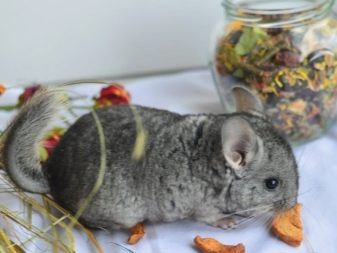

Next, watch a video with tips for caring for chinchillas.








